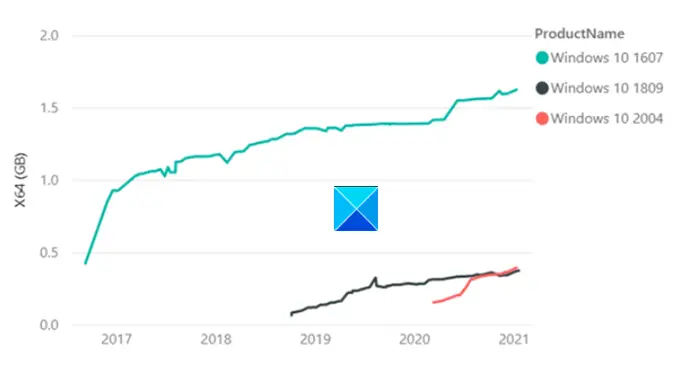Best practices to improve Windows Update installation times
A cumulative update for Windows contains all components that are required for a given version of Windows 10. But over time, equally new components are serviced, the overall size of the latest cumulative update (LCU) grows, and update time is prolonged. This occurs because new components added via quality updates apply Component-Based Servicing (CBS) to install updates. In this method, components and features are packaged as pocket-sized modules that encompass the full functionality. Here are a few best practices you tin can employ to improve the Windows Update installation time and feel.
Best practices to amend Windows Update installation times
As you may know, the Windows quality update installation process has three major phases. During the online phase, the update is uncompressed, and the changes are staged. Side by side, there'due south a Shutdown phase during which the updated plan is created and validated. Then, the system is shut downward. Finally, there's the Reboot phase when the organisation is rebooted, components are installed, and the changes are committed.
It is the Shutdown and Reboot phases that have a major impact on piece of work since users cannot admission their systems while the process takes place. Y'all tin manage this via the post-obit methods.
- Upgrade Windows x to latest build.
- Make hardware optimizations.
- Ameliorate CPU clock speed.
- Run a single antivirus or file arrangement, filter commuter.
- Schedule updates for low-traffic periods.
Let's encompass the above methods in a fleck of detail.
1] Upgrade to Windows 10 to latest build

Subsequently versions of Windows, starting from Windows v1809 offering engineering science improvements that reduce the size of the updates and more efficient to install. Statistical information reveals,
LCU of Windows x, version 1607 was 1.2GB in size, on year after RTM in comparison to LCU Windows v1809 which was just 310MB (0.3GB) 1 year after RTM.
ii] Make hardware optimizations
Researchers at Microsoft during internal testing noticed that there was upwardly to a 6x install time reduction when they had run Windows and the update process on a fast SSD drive rather than HDD. So, nosotros recommend users run Windows and the update procedure on fast SSD drives instead of HDD by placing the Windows drive in the SSD.
Read: Dissimilar types of Windows Updates.
3] Amend CPU clock speed
CPU clock speed is the clogging and CPU upgrades can make a deviation. If your PC is equipped with an Intel CPU with an SKU (proper noun) ending in 'M' or X (i7–7700k, i5–6600K, etc), and supports a motherboard with a chipset starting with Z or X series (Z170, X99, etc), enter the computers BIOS.
Then, alter cadre clock speed and core voltage to defined numbers and enter Windows to test the stability of your new clock speeds (overclock). Perform this process until you reach a desired speed/max temperature.
4] Run a single antivirus or file system filter driver
Brand certain you are running a unmarried antivirus or file organization filter driver. Simultaneously running a 3rd party antivirus and Microsoft Defender tin can deadening down the update process. Windows Defender is enabled by default. When you install another antivirus plan, Defender is automatically disabled.
5] Schedule updates for low-traffic periods
Installing updates during peak hours take a long time. Then instead of choosing that fourth dimension, schedule updates for subsequently-hours when activity is low. For this, become to Settings and specify when you would like to schedule updates.
Microsoft has suggestions to offer, also, to improve the performance of Windows Update offline scan.
Using Windows Update Agent (WUA) to browse for updates offline is a great way to confirm whether your devices are secure without connecting to Windows Update or to a Windows Server Update Services (WSUS) server. If you encounter out of memory problems while running WUA scans we recommend the following mitigations:
-
- Identify whether online or WSUS update scans are options in your environment.
- If you are using a 3rd-party offline browse tool that internally calls WUA, consider reconfiguring it to either browse WSUS or WU.
- Run Windows Update offline scan during a maintenance Window where no other applications are using memory.
- Increase organization retentiveness to 8GB or college, this volition ensure that the metadata can exist parsed without memory bug.
Hope you find the post informative.

Source: https://www.thewindowsclub.com/how-to-improve-windows-update-installation-times-microsoft-has-some-suggestions
Posted by: underwoodthints.blogspot.com


0 Response to "Best practices to improve Windows Update installation times"
Post a Comment